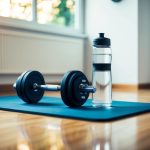
Washing Machine Settings for Activewear
Selecting the right washing machine settings can significantly impact the lifespan and performance of activewear. Focus on using the appropriate cycle, temperature, and specific settings designed for activewear to maintain their quality and functionality.
Using Gentle or Delicate Cycles
Activewear is often made from materials like spandex, nylon, or polyester, which require extra care. Using the gentle cycle is recommended, as it reduces the mechanical agitation that can damage these delicate fabrics. The gentle or delicate cycle emulates hand washing, providing the necessary care without excessive wear and tear.
Such cycles minimize the risk of stretching or distorting the fabric. Many washing machines have these settings with reduced spin speeds and shorter wash times, which help in preserving elasticity and fit. It’s important to avoid heavy-duty or regular cycles that may weaken fibers over time.
The Best Temperature for Washing Activewear
Temperature plays a crucial role in maintaining activewear. It’s ideal to wash activewear in cold water. Cold water helps in retaining color, shape, and the technical properties of performance fabrics. Hot water can cause shrinkage and color fading, while also potentially breaking down spandex or elastane.
Cold settings are typically gentle on the fabric, helping to conserve its moisture-wicking and breathable qualities. If odor removal is necessary, consider pre-soaking or using specialized detergents. Rather than increasing the heat, opt for prolonged soaking periods or pre-treatment for stubborn odor issues.
Activewear-Exclusive Cycles
Some advanced washing machines come equipped with an activewear cycle specifically designed for performance fabrics. This cycle adjusts water levels and temperatures to match the unique needs of activewear. It offers a balance between effective cleaning and maintaining fabric integrity.
These settings are optimized for removing sweat and odor without compromising the garment’s structural design. If available, this is an ideal choice for individuals who frequently wash activewear. It combines precise agitation and rinsing actions tailored for synthetic fibers, ensuring clothes remain fresh and in top condition for as long as possible.
Hand Washing Techniques
Maintaining activewear longevity requires precise hand washing. Cold water and gentle techniques help preserve fabric integrity and color.
When and How to Hand Wash
Hand washing activewear is preferred when dealing with delicate fabrics or frequent use. Begin by filling a basin with cold water and adding a small amount of mild detergent. Submerge the garment, ensuring it is fully soaked. Gently agitate the garment by swirling and pressing it in the water for a few minutes. This removes dirt without damaging fibers. Avoid excessive scrubbing or twisting, which can compromise fabric elasticity. If the garment is heavily soiled, allow it to soak for 10-15 minutes before rinsing.
Rinsing Techniques for Sensitive Fabrics
Effective rinsing is crucial to remove detergent residues from sensitive activewear fabrics. After washing, drain the basin and refill with clean, cold water. Agitate the garment gently to release soap. Repeat the rinse process until water runs clear, indicating all detergent is washed away. Use cold water for the final rinse to maintain fabric strength and prevent shrinkage. Once rinsed, carefully press the garment against the basin’s side to remove excess water. Avoid wringing, as this can distort the fabric. Lay the garment flat on a clean, dry towel, roll it up to absorb water, then air dry for best results.
By following these methods, the quality and lifespan of activewear can be significantly enhanced.



